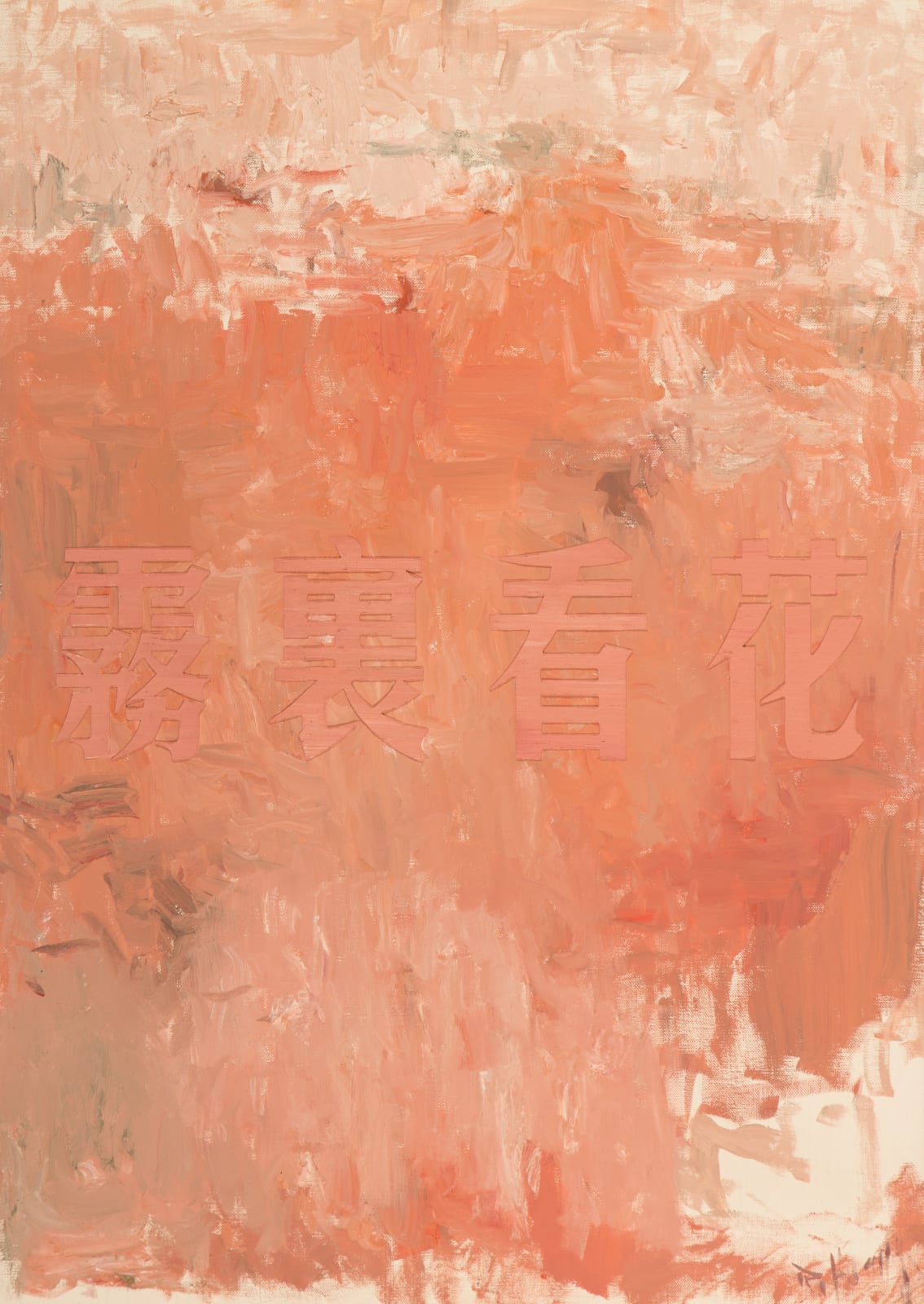Huang Rui
Blurred Vision ( 霧裡看花), 2012
Oil on Canvas
Original Sizes Available:
105 x 74 cm
105 x 74 cm
Chinese Title: 《雾里看花》 布上油画 SET PHRASE (CHINESE IDIOMS) This one reads : Seeing a flower through the mist. In Tang Dynasty poet Du Fu’s “Written on a Boat during...
Chinese Title: 《雾里看花》 布上油画
SET PHRASE (CHINESE IDIOMS)
This one reads : Seeing a flower through the mist.
In Tang Dynasty poet Du Fu’s “Written on a Boat during the Cold Food Festival,” he writes, “With the spring water, the boat seems sitting in the sky,/ In old age, flowers are as seen through fog.” This phrase for the blurred vision of old age was later used to imply that someone is unable to truly understand things.
About colour-text series
Meanings of words sometimes are lost in the development and narration over time, and as a result, the current explanations of these phrases may have changed beyond all recognition. In these experiments, Huang Rui attempts to pull the phrases back their original settings, using changes in color to re-create the origins of the text, while highlighting the concision of the text’s background. These works reflect blended visions of language, stories, landscape, criticism, exposition, and finally, color and line.
SET PHRASE (CHINESE IDIOMS)
This one reads : Seeing a flower through the mist.
In Tang Dynasty poet Du Fu’s “Written on a Boat during the Cold Food Festival,” he writes, “With the spring water, the boat seems sitting in the sky,/ In old age, flowers are as seen through fog.” This phrase for the blurred vision of old age was later used to imply that someone is unable to truly understand things.
About colour-text series
Meanings of words sometimes are lost in the development and narration over time, and as a result, the current explanations of these phrases may have changed beyond all recognition. In these experiments, Huang Rui attempts to pull the phrases back their original settings, using changes in color to re-create the origins of the text, while highlighting the concision of the text’s background. These works reflect blended visions of language, stories, landscape, criticism, exposition, and finally, color and line.
